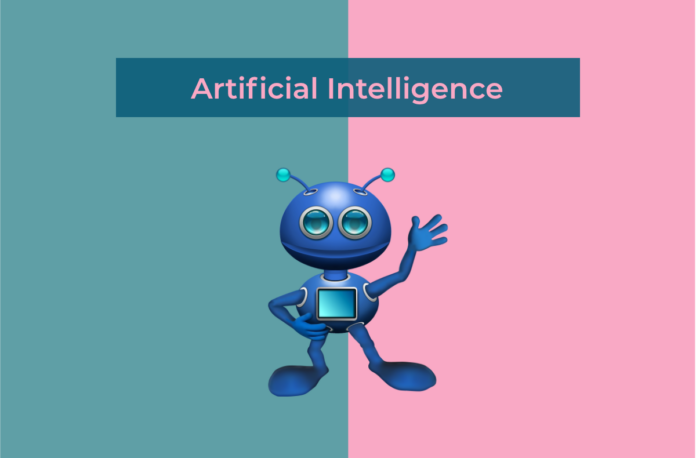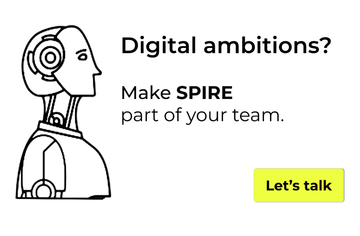As the name suggests itself, artificial intelligence is a blend of two words, artificial and intelligence, this way, it’s intelligence that’s artificially made.
Until today, there have been many different types of artificial intelligence techniques or methods including support vector machines, neural networks, and vague logic.
These useful techniques have been successfully helping in the missing data estimation, modeling interstate conflict, finite element models, economics, and robotics.
How useful artificial intelligence is for your businesses
No matter which industry you are in, artificial intelligence (AI) helps every business to improve and evolve its operations. Let me tell you that in 2019, the artificial intelligence market size was estimated at $27 billion, which may touch on $267 billion by 2027.
While enterprises are adopting and adapting their businesses to the latest technologies, it is challenging to implement an artificial intelligence strategy, most importantly for legacy companies and those who don’t have any idea how and where to begin with it.
How to start an artificial intelligence-based pilot project?
By definition, pilot projects are experimented ahead of the large-scale quantitative research so the use of time and money can be avoided on an insufficiently designed project.
These are like “try-before-you-buy” projects that help businesses understand the potential value and challenges that they may encounter while handling their final project, based on that, they can be sure what solutions and the process they need to offer to their company.
Though a lot of us chase after similar conventional principles – define the problem, expected results, resources/costs required, and estimate results– the ever-changing arena of artificial intelligence comes with certain specific nuances that you must know and understand.
Here are the four main criteria that you need to consider before selecting an artificial intelligence pilot project.
1. Clearly define the business outcome your artificial intelligence project should deliver
Over the past few years, Artificial intelligence (AI) has been one of the most discussed topics whether you’re talking about digital transformation, blockchain, IoT, etc.
Though artificial intelligence’s certain aspects do make you feel positive, for example, it helps in accelerating COVID-19 vaccination rates, enhancing your shopping experience – it isn’t immune from some negative aspects, as well, such as – people may lose their jobs or ethical dilemmas. But whatsoever be AI’s positive and negative aspects, it is here to stay.
Smart businesses are seriously looking forward to strategically leveraging artificial intelligence technology for everything they do, be it marketing or hiring. Notwithstanding its widespread appeal, AI doesn’t suit every business process, hence, it cannot be called one-size-fits-all.
That’s why, before getting started with an artificial intelligence AI pilot project, you must clearly define the challenges and ensure the results you believe it will solve. Do you have any specific technologies, tools, and measures that will help you keep track of your progress?
Once you have clearly defined the repercussions of your pilot project and sell it to the heads within your organization, you need to be ready to tackle the next challenge.
2. Choose the right team of experts for your artificial intelligence project
To handle AI initiatives, there are many options such as cloud services, open-source, products with “built-in” AI attributes, employing a data scientist to create your own solution.
While you can choose to go with customized cloud solutions, they need to be provided training on data because that’s not yours. This is going to be an expensive route.
However, if you hire a data scientist to have your own solution built, based on your needs, he/she will customize your solution, precisely, based on your project’s needs.
To make it possible, you will have to find out the right level of talent and domain expertise.
That’s not easy!
To gain results with the least resistance, you will have to take into account the challenges that are sure to come with the solution you finally select – none are perfect.
Measure what is best suited for your current IT ecosystem, the resources should not only know how to deploy your pilot project but also know how to improve it continuously.
Besides, the associated stakeholders should know how to keep the initiative on track.
3. Learning curve shouldn’t be confined to humans but for the artificial intelligence models, as well
AI pipelines must be given proper training. With proper engineering, they become smarter with time.
Hence, the learning curve must not be confined to only those getting interacted with; rather it should be stretched for the models themselves. And if you choose to take help from any leading cloud service provider, it will help make fine-tuning and tweaking fit for your business requirements, target metrics, and inherent biases.
Keep in mind that this requires a lot of effort and time, so do make sure what amount of effort and time you can put and invest in for successfully running your project.
Conversely, you can also harness the power of advanced avant-garde technology, but if you don’t help people using it with proper training, it’s of no use. All go in vain.
4. Keep adapting your artificial intelligence pilot project to the latest changes in the world
Pilot programs (projects) are good as they help in testing the highest-risk factors of a proposed solution before you fully commit to it.
If you have a project, which is full of complexities, financially burdensome, or resource-heavy, it will be wise to end it now with minimal losses and lessons learned.
But a pilot project with new AI initiatives is never meant for a successful production rollout.
There is a constant change in the business data and needs. Hence, if you are looking to achieve the optimum outcomes from your AI initiative, retraining of models and ongoing testing are mandatory to provide exact outcomes to your customers.
And this shouldn’t get away right after execution. One-time acceptance testing is though perfect for traditional (static) software, it isn’t for AI systems. Therefore, the latter should continue to adapt themselves as per the new changes taking place in the world.
Better if you constantly make changes in the monitoring process, online measurement, and retrain models to do correction for data and concept drift, potential biases, and other challenges in the way that you might not notice in early testing.
Conclusion
So, if you keep the above four criteria in mind before choosing your pilot project, it is sure that you will have the most impactful AI pilot project for your business, and thus pave the least-risky and faster learning way for your firm on how to perfectly use AI.
After reading the article about the use of artificial intelligence (AI) for your business, we hope that you want to know more on how you can apply it to boost your business productivity.
If you have any questions about AI technology or need some experts’ advice to get your projects and ideas, we would be happy to answer them in the comment section below.



